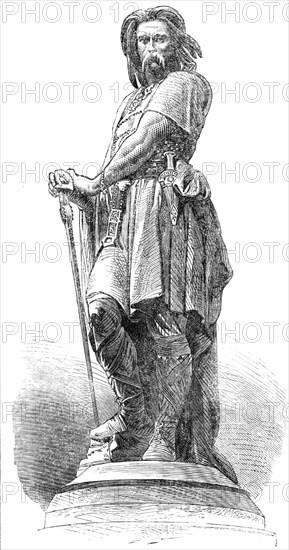
Sujet
Statue of the Gaulish chieftain Vercingetorix, 1865. Creator: Unknown.
Légende
Statue of the Gaulish chieftain Vercingetorix, 1865. 'It is in the last moment of despair that the artist who designed the colossal statue (M. Millet, of Paris) has sought to represent the Gallic chief. The statue has been ably reproduced in metal by M. Aubert...The very successful execution of this statue in cuivre repoussé is calculated to bring about important changes in the art of sculpture, especially in its application to public monuments in the open air. The idea of this process, to which the name of chalcoglyphy has been given, originated about ten years since in the mind of M. Cusson, a working blacksmith at Montpellier (the subsequent instructor of M. Aubert), who has superseded the chisel by the hammer, and the marble by plates of copper, which he beats into the forms prescribed by his models. In these chalcoglyphic productions the copper, from its softness, can be transformed by the hammer into any shape, and in less than half the time required for the execution of works chiseled out of marble; the difference both in the cost of production and in the diminished weight of the statue or monument is very considerable'. From "Illustrated London News", 1865.
Crédit
Photo12/Heritage Images/The Print Collector
Notre référence
HRM24A26_389
Model release
NA
Property release
NA
Licence
Droits gérés
Format disponible
8,7Mo (519,3Ko) / 10,7cm x 20,3cm / 1261 x 2398 (300dpi)